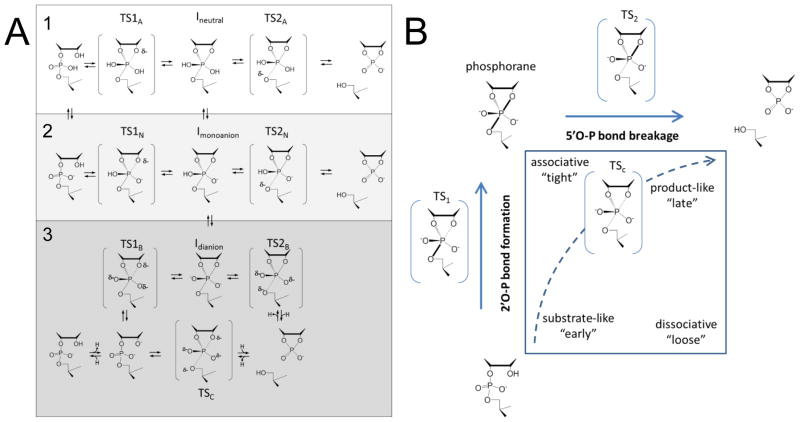Figure 1.
Reaction pathways and transition states for RNA 2′-O-transphosphorylation. (A). Overall reaction schemes for acid and base catalysis. Acid catalysis of the neutral diester (1) and monoanion (2) involve stepwise mechanisms via a phosphorane that may be neutral or monoanionic. Scheme 3 shows the potential stepwise (via a dianionic phosphorane) and concerted mechanisms for base catalysis. (B). More-O’Ferrall/Jencks diagram for RNA 2′-O-transphosphorylation showing the landscape for conversion of the substrate (bottom left) to products (top right). The reaction coordinate traverses the vertical 2′O-P bond formation and horizontal 5′O-P bond cleavage coordinates. A dotted arrow indicates the path for a hypothetical concerted mechanism with a single TSc.

